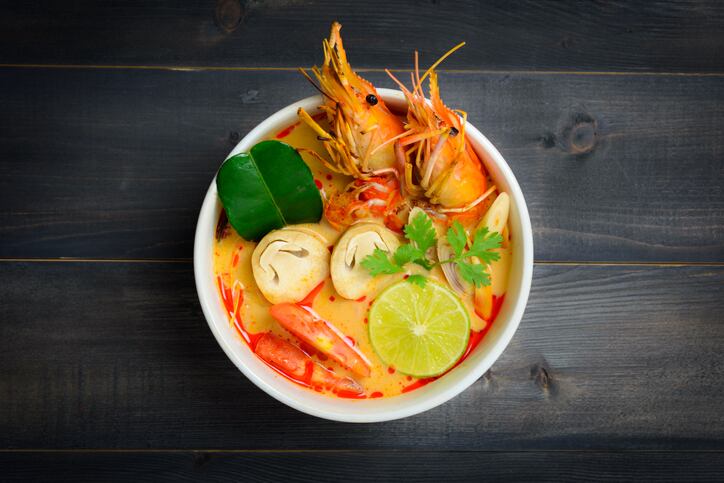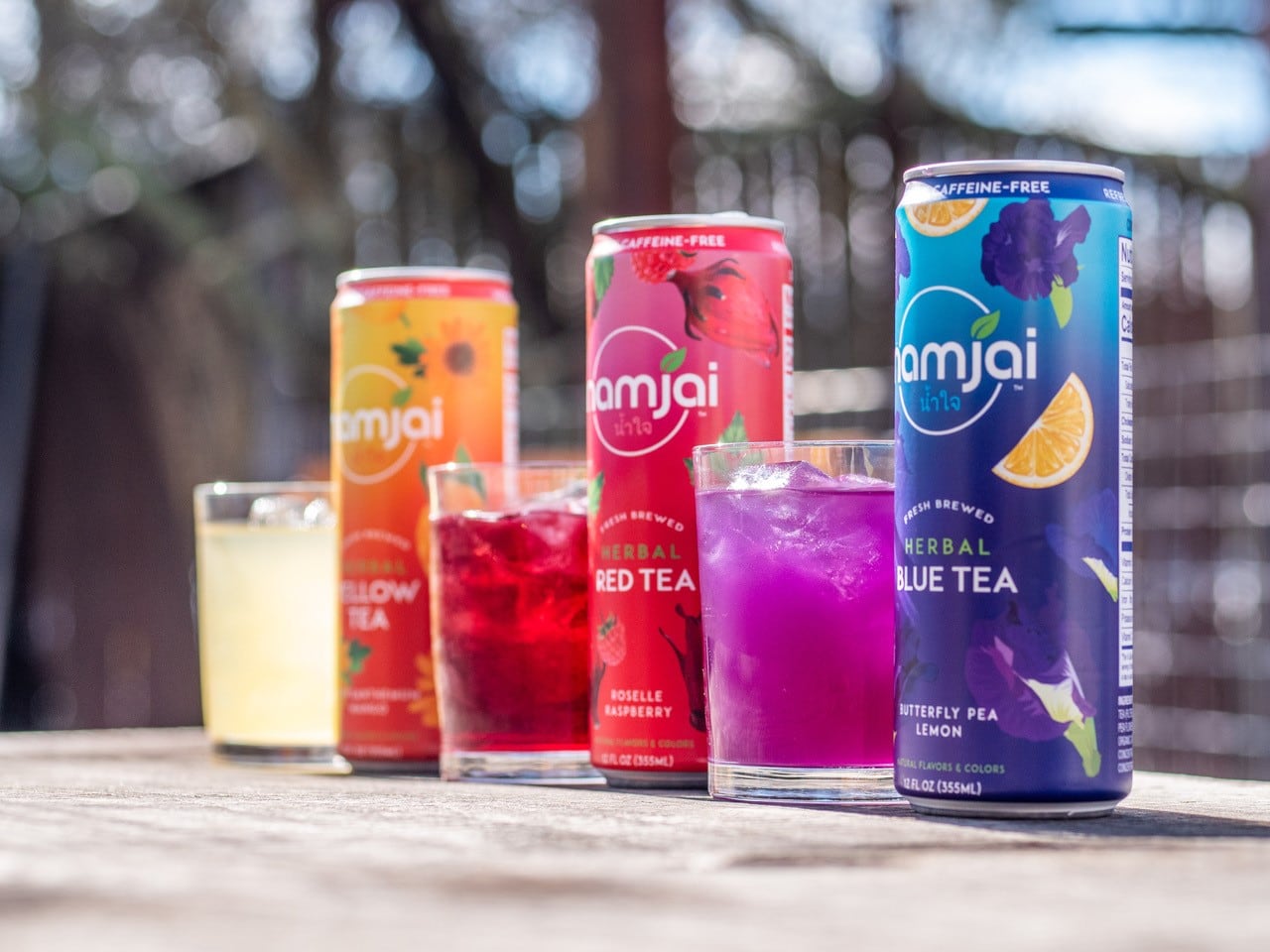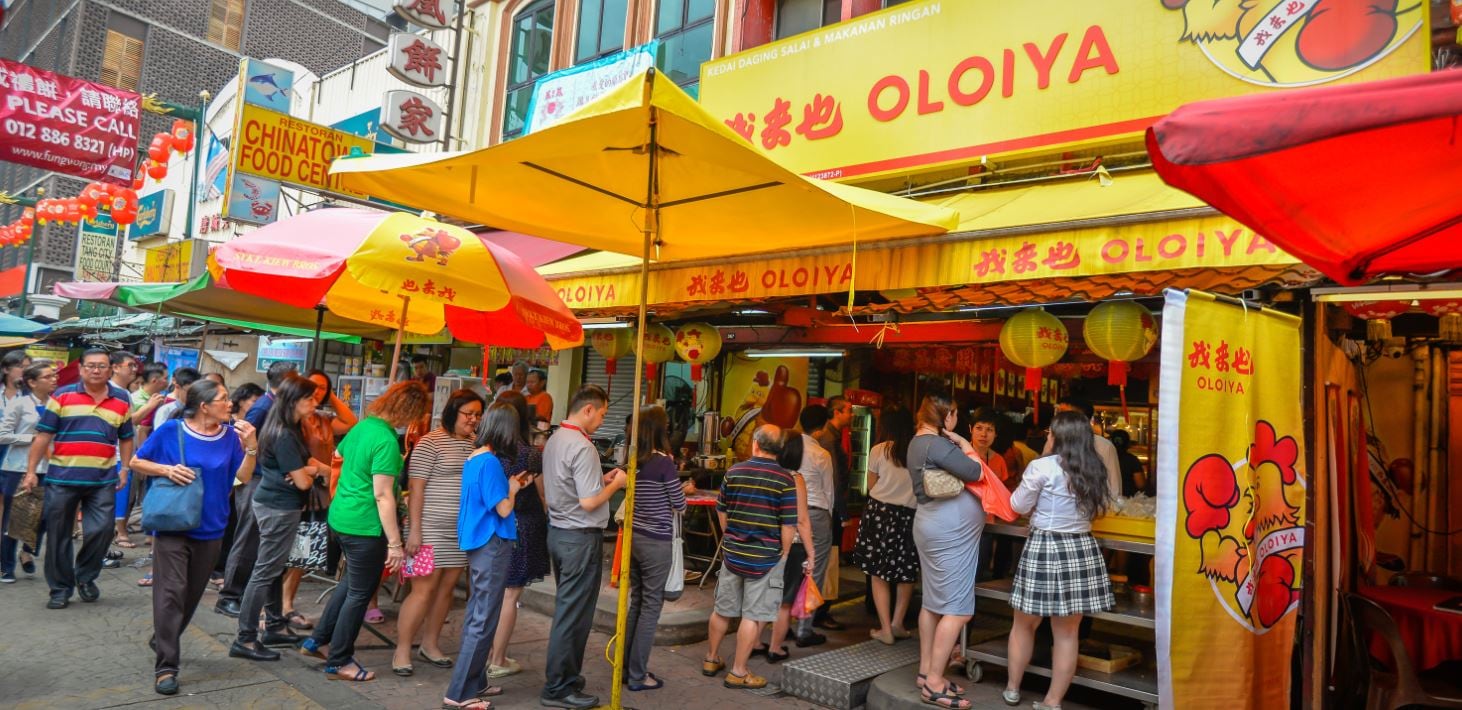Known around the world as a spicy and sour seafood soup, tom yum has benefited from lobbying at the highest levels in Thailand.
Common ingredients used in tom yam include lemongrass, kaffir lime leaves, lime juice, chilli peppers, fish sauce, and shrimps.
It is one of the most commonly served Southeast Asian foods in the world. In Thailand, it is seen as a benchmark for a restaurant’s prowess. If the tom yum doesn’t delight, you can bet it’s worth taking a pass on the rest of the menu.
In a cabinet meeting chaired by Thai Prime Minister Prayuth Chan-o-cha last month, it was agreed that the dish would be a candidate for the list this year.
According to Thai culture minister Itthiphol Kunplome, tom yum reflects the “simple lifestyle of agricultural communities”.
If selected, it will join other Asian dishes that have been also been given intangible cultural heritage status by UNESCO. This category aims to protect important items of cultural heritage worldwide and the awareness of their significance.
Though most of these entries refer to dance, literature and artistic traditions, there are some notable food-related items from Asia and the Middle East. We have compiled a list of those currently on the UNESCO list.
1. Hawker culture in Singapore
Inscribed in 2020 on representation by Singapore.
Community dining and culinary practices in a multicultural urban context is present throughout Singapore. These so-called hawker centres serve as community dining rooms that evolved from street food culture. UNESCO says that these eating places have "become markers of Singapore as a multicultural city-state, comprising Chinese, Malay, Indian and other cultures”.
Some of the oldest operating hawkers started their practice in the 1960s and many specialise in a particular dish. Community organisations, NGOs and educational institutions play a significant role in promoting and sustaining hawker culture through training programmes, events and documentation projects.
“As a social space that embraces people from diverse socioeconomic backgrounds, hawker centres play a crucial role in enhancing community interactions and strengthening the social fabric.”
2. Date palm knowledge, skills, traditions and practices
Inscribed in 2019 on representation by Bahrain, Egypt, Iraq, Jordan, Kuwait, Mauritania, Morocco, Oman, Palestine, Saudi Arabia, Sudan, Tunisia, United Arab Emirates and Yemen.
The date palm has been connected to the regional population of the Middle East and north Africa for centuries, serving both as the source of numerous associated crafts, professions and social and cultural traditions, customs and practices, and as a key form of nutrition, says UNESCO.
Practitioners include date palm farm owners, farmers who plant, nurture and irrigate the date palm offshoots, craftspeople who produce traditional products using various parts of the palm tree, date traders, creative individuals and performers of associated folkloric tales and poems.
“The date palm, knowledge, skills, traditions and practices have played a pivotal role in strengthening the connection between people and the land in the Arab region, helping them face the challenges of the harsh desert environment.
“This historic relationship in the region and the element has produced a rich cultural heritage of related practices between people in the region, knowledge and skills maintained to this day,” says UNESCO.
3. Making airag in khokhuur
Inscribed in 2019 on representation by Mongolia.
This includes the traditional method of making airag, a fermented beverage made from mare’s milk, and related equipment such as the khokhuur, which is a cowhide vessel. The technique used to make airag consists of milking the mares, cooling the fresh milk and churning it inside the khokhuur over 500 times. The khokhuur is made by artisans with skills passed down the generations.
“A nutritious and easily digestible beverage, airag is an important part of the daily diet of Mongolians and has also been proven to be effective for curing certain diseases. It also plays an essential role as a symbolic beverage in the daily lives of herders and social celebrations. It is served as a holy drink during festivals and religious offerings,” says UNESCO.
4. Dolma making and sharing
Inscribed in 2017 on representation by Azerbaijan.
Dolma is a traditional meal that takes the form of small fillings containing meat, onion, rice, peas and spices wrapped in fresh or pre-cooked leaves or stuffed in fruits and vegetables.
It is shared within families and different methods and ingredients used to prepare the traditional meal by different communities throughout Azerbaijan, where it is perceived as a central culinary practice.
“The tradition is transmitted through parent-child relationships, while formal transmission mainly occurs in vocational and apprenticeship schools,” says UNESCO
“The element enjoys great visibility within Azerbaijani society, and its viability is ensured by the communities through numerous awareness-raising activities and events such as festivals, vocational schools that teach the tradition and the preparation of publications on the subject.”
5. Flatbread making and sharing
Inscribed in 2016 on representation by Azerbaijan, Iran, Kazakhstan, Kyrgyzstan and Turkey.
The culture of making and sharing flatbread in communities western and central Asia carries social functions that have enabled it to continue as a widely-practised tradition.
Making the bread, known as lavash, katyrma, jupka or yufka in different countries, involves at least three people who are often family members. Each has a different role in its preparation and baking. Flatbread is baked using a an earth or stone oven in the ground known as a tandyr or tanūr along with a sāj, or metal plate, and cauldron called a kazan.
Besides regular meals, flatbread is shared at weddings, births, funerals, holidays and during prayers. In Azerbaijan and Iran, it is put on the bride’s shoulders or crumbled over her head to wish the couple prosperity while in Turkey it is given to the couple’s neighbours.
At funerals in Kazakhstan, it is believed the bread should be prepared to protect the deceased and in Kyrgyzstan, sharing the bread provides a better afterlife for the deceased.
“The practice, transmitted by participation within families and from master to apprentice, expresses hospitality, solidarity and certain beliefs that symbolise common cultural roots reinforcing community belonging,” says UNESCO.
6. Oshi Palav
Inscribed in 2016 on representation by Tajikistan.
Oshi palav is a traditional dish of communities in Tajikistan that is recognised as a part of their cultural heritage. Otherwise known as the “King of meals”, it is based on a recipe using vegetables, rice, meat and spices, although up to 200 varieties of the dish exist.
Considered an inclusive practice that aims to bring people of different backgrounds together, oshi palav is prepared to be enjoyed at regular mealtimes, as well as social gatherings, celebrations and rituals.
“The importance of the dish to communities in Tajikistan is indicative in sayings such as ‘No osh, no acquaintance’ and ‘If you have eaten osh from somebody, you must respect them for 40 years’,” says UNESCO.
“Once apprentices master oshi palav, they will host a dinner for the trainer and guests during which the trainer receives a skull-cap and traditional dress, while the apprentice receives a tool used for cooking oshi palav. This symbolizes the apprentice’s independence.”
7. Arabic coffee
Inscribed in 2015 on representation by Qatar, Saudi Arabia and the UAE.
“Serving Arabic coffee is an important aspect of hospitality in Arab societies and considered a ceremonial act of generosity,” says UNESCO.
Traditionally, coffee is prepared in front of guests and begins with the selection of beans, which are lightly roasted in a shallow pan over a fire, which are then placed into a copper mortar and pounded with a copper pestle.
The coffee grounds are placed into a large copper coffee pot; water is added and the pot is placed on the fire. Once brewed, it is poured into a smaller coffee pot from which it is poured into small cups.
The most important or oldest guest is served first, filling a quarter of the cup, which can then be refilled. Common practice is to drink at least one cup but not exceed three.
“Knowledge and traditions are passed on within the family through observation and practice. Young family members accompany their elders to the market to learn how to select the best coffee beans.”
8. Washoku
Inscribed in 2013 on representation by Japan.
“Washoku is a social practice based on skills, knowledge, practice and traditions related to the production, processing, preparation and consumption of food. It is associated with an essential spirit of respect for nature that is closely related to the sustainable use of natural resources,” says UNESCO.
The basic knowledge and the social and cultural characteristics associated with Washoku are typically seen during New Year celebrations. The Japanese make various preparations to welcome the deities of the incoming year, pounding rice cakes and preparing special meals and beautifully decorated dishes using fresh ingredients, each of which has a symbolic meaning.
These dishes are served on special tableware and shared by family members or collectively among communities. The practice favours the consumption of various natural, locally sourced ingredients such as rice, fish, vegetables and edible wild plants.
The basic knowledge and skills, such as the proper seasoning of home cooking, are passed down in the home at shared mealtimes.




